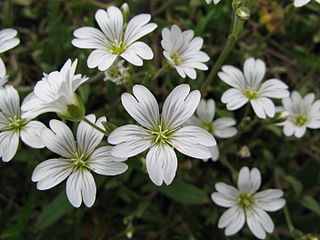
Cerastium is a genus of annual, winter annual, or perennial flowering plants belonging to the family Caryophyllaceae. They are commonly called mouse-ears or mouse-ear chickweeds. There are 214 accepted species, found nearly worldwide but with the greatest concentration in the northern temperate regions. A number of the species are common weeds in fields and on disturbed ground.

Lallemantia is a genus of flowering plants in the family Lamiaceae. It is named after the German botanist Julius Léopold Eduard Avé-Lallemant.

Lagochilus is a genus of the mint family that contains Turkistan mint.
Carl Anton von Meyer was a German, Russified botanist and explorer.
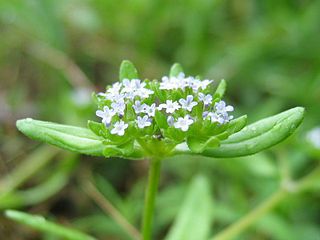
Valerianella is a genus of plant in family Caprifoliaceae. Many plants of this genus are known by the common name corn salad or cornsalad, although that name most often refers to Valerianella locusta.

Zygophyllum is the type genus of the flowering plant family Zygophyllaceae. The generic name is derived from the Greek words ζυγόν (zygon), meaning "double", and φυλλον (phyllon), meaning "leaf". It refers to the leaves, each of which have two leaflets.

Anemonoides is a genus of flowering plants in the buttercup family Ranunculaceae. Plants of the genus are native to the temperate regions of the Northern Hemisphere, on the continents of North America, Europe, and Asia. The generic name Anemonoides means "anemone-like", a reminder that many of the species were formerly included within the genus Anemone.
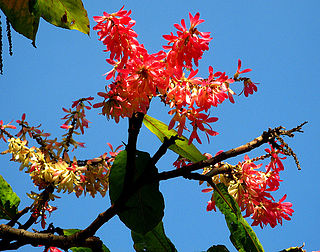
Triplaris is a genus of plants in the family Polygonaceae. Ant tree is a common name for plants in this genus.

Crucianella is a genus of flowering plants in the family Rubiaceae. The species are annual herbs found from the Mediterranean to Central Asia and the Arabian Peninsula. One species is naturalized in northern California, southern Oregon, and Idaho.
Rudolph Friedrich Hohenacker was a Swiss missionary and botanist born in Zürich.

Daucus glochidiatus, commonly known as Australian carrot, Austral carrot or native carrot, is a species of herb in the flowering plant family Apiaceae. It is native to Australia and New Zealand.

Centaurea tchihatcheffii is a species of flowering plant in the family Asteraceae. The flowers are most attractive as the pale or dark pinkish-red marginal florets take on an iridescent shimmer in the sun and wind, hence the vernacular name Yanardöner, meaning ‘iridescent flower’. It flowers from late April to mid-June and in cultivation even earlier, e.g., March in Istanbul. The peak flowering period is mid-May and in earlier years it was sold in some quantity by street florists in Ankara. It is mainly bee-, bug- and beetle-pollinated. Ants play an important role in seed dispersal and the fully ripe fat achenes are a delight for pigeons which settle down to feed in large flocks. The species is of taxonomic interest as it has some rather unusual and unique features not existing in any other Centaurea. For example, the marginal florets are funnel-shaped with crenate margins. The anther-tube is provided with glands at the tips of the appendages.
Amblyocarpum is a genus of flowering plants in the daisy family described as a genus in 1837.
Dipterocome is a genus of flowering plants in the family Asteraceae.

Handelia is a genus of flowering plants in the daisy family.

Acanthophyllum is a genus of flowering plants in the family Caryophyllaceae with about 75 species, spread in the Irano-Turanian area.
Erigeron oreades is an Asian species of flowering plants in the family Asteraceae. It grows on slopes and meadows in Xinjiang, Mongolia, Kazakhstan, and Siberia.
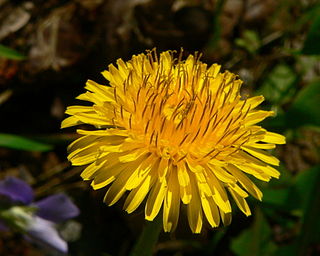
Crepidinae is a subtribe of Cichorieae in the family Asteraceae.
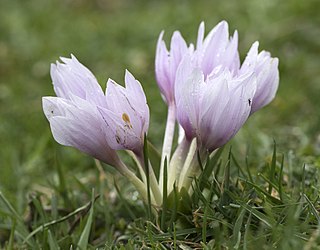
Colchicum szovitsii is a species of flowering plant in the family Colchicaceae, native from eastern Bulgaria to northwestern Jordan and Iran. It was first described in 1835.














